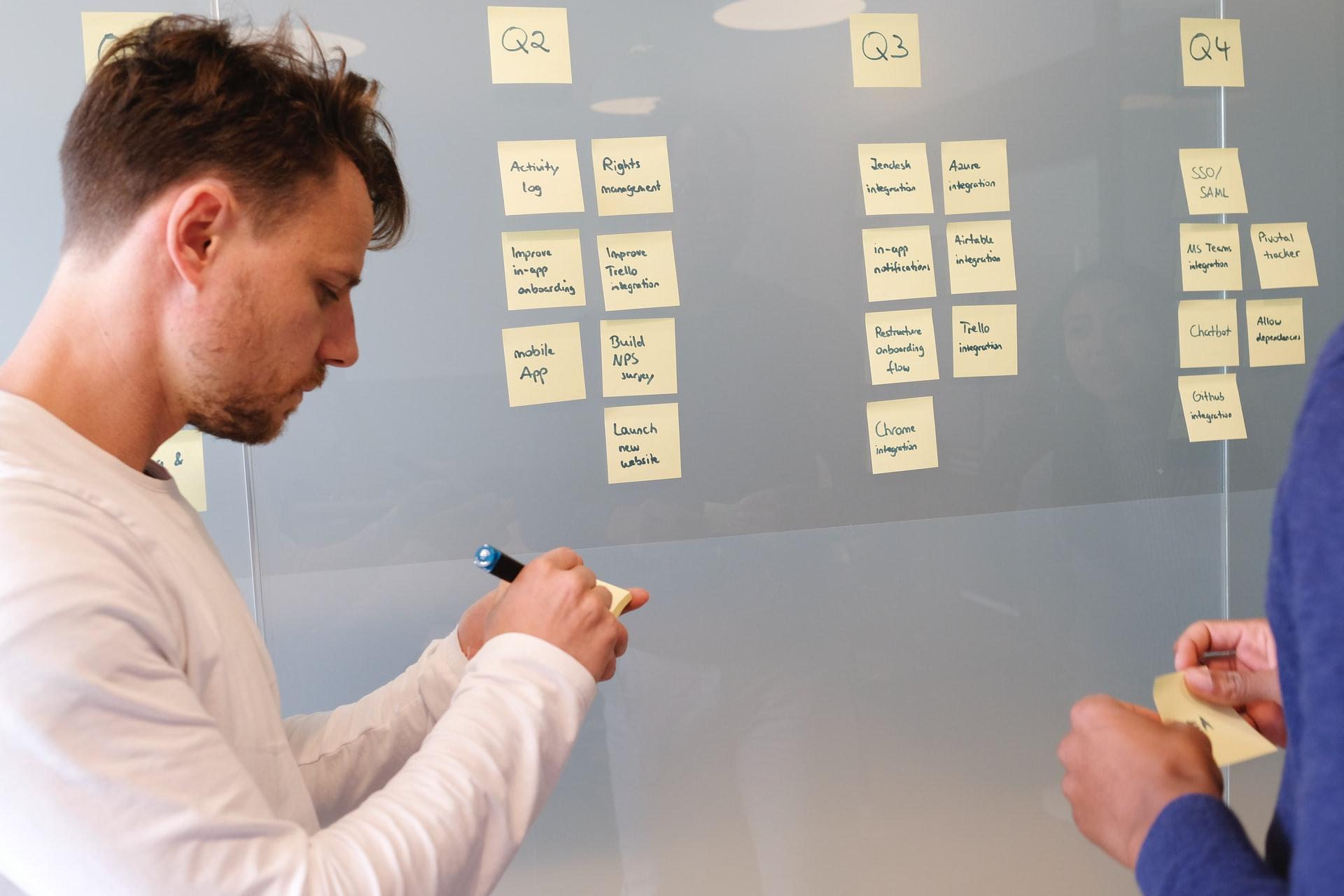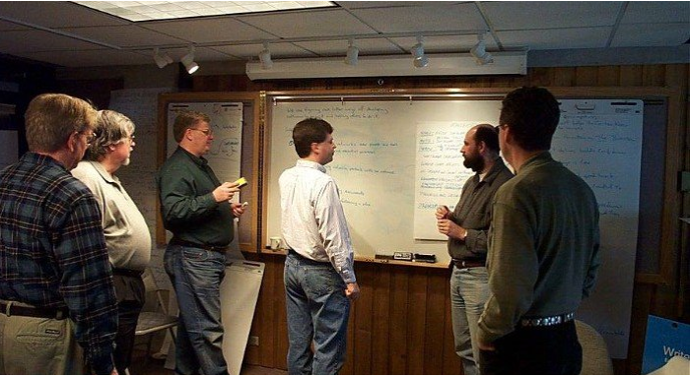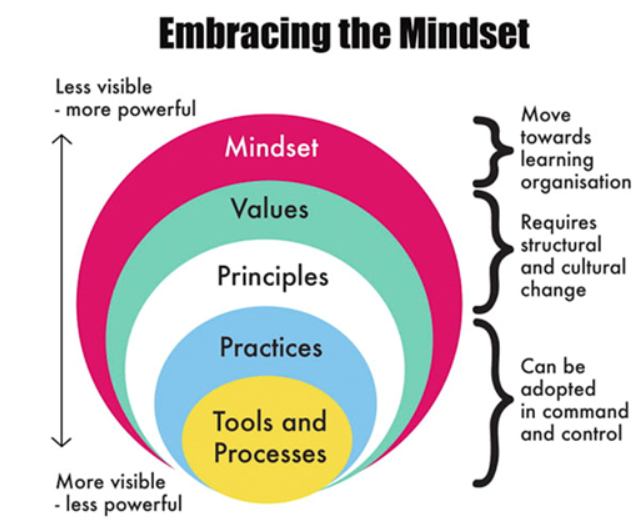What makes an organization agile?
Discover what an agile organization is and learn about mindset, practices and methods.
What is an Agile Organization?
The world is changing faster than ever before. Organizations of every types, formats and business areas are struggling to remain relevant in the eyes of their customers and society. Customers are more informed and their expectations are higher than they’ve ever been. Employees demand more clarity, empowerment, and meaning in their work. It is only high-performing, adaptable, and agile organizations who will thrive in this unpredictable market. We call this business agility.

Agile organizations are able to adapt and react quickly to new challenges. They embrace a complex and unpredictable environment by being customer-centric rather than profit-centric, adopting fast learning and decision cycles, and building a network of empowered teams and individuals enabled by technology and driven by a shared purpose.

Agility is the new way of working.
At its simplest, agility is the capacity and willingness of an organization to adapt to, create, and leverage change for their customer’s benefit.
Start thinking of business agility as the common thread. An adaptable and sustainable narrative that binds & guides us into the uncertain future. An operating model that allows to adapt and respond to change in every area of your business. One that acknowledges that an organization is a complex adaptive system and that agility must be everyone’s responsibility. That is to say that “an organization is only as agile as its least agile division!“, and that’s probably not IT anymore.
However, despite the complexity of the transition, the benefits to business agility are manifest; starting with the ability to rapidly respond to competitive challenges, disruption, and changes in demand. In fact, an agile organization can do more than just respond. It can be the challenger and disrupter in this uncertain and unpredictable market. Staff satisfaction and retention is higher and, with a general reduction in management overheads, operating costs are lower. Finally, because agile organizations are purpose-driven, you are able to be more responsive to your customers or wider purpose.
It all started in 2001 with the Agile Manifesto
In 2001, 17 co-authors wrote a 264-word document called the “The Manifesto for Agile Software Development.” It consists of 4 values and 12 principles:
"We are uncovering better ways of developing software by doing it and helping others do it. Through this work we have come to value:
-
Individuals and interactions over processes and tools
-
Working software over comprehensive documentation
-
Customer collaboration over contract negotiation
-
Responding to change over following a plan
That is, while there is value in the items on the right, we value the rights on the left more."

The 12 Agile Principles
-
Our highest priority is to satisfy the customer through early and continuous delivery of valuable software.
-
Welcome changing requirements, even late in development. Agile processes harness change for the customer's competitive advantage.
-
Deliver working software frequently, from a couple of weeks to a couple of months, with a preference to the shorter timescale.
-
Business people and developers must work together daily throughout the project.
-
Build projects around motivated individuals. Give them the environment and support they need, and trust them to get the job done.
-
. The most efficient and effective method of conveying information to and within a development team is face-to-face conversation.
-
Working software is the primary measure of progress.
-
Agile processes promote sustainable development. The sponsors, developers, and users should be able to maintain a constant pace indefinitely.
-
Continuous attention to technical excellence and good design enhances agility.
-
Simplicity - the art of maximizing the amount of work not done - is essential.
-
The best architectures, requirements, and designs emerge from self-organizing teams.
-
At regular intervals, the team reflects on how to become more effective, then tunes and adjusts its behavior accordingly.
Want start learning today?
Join us for Agile Foundations!

The Agile Mindset
The Agile mindset wraps around everything.
Agile is not about “doing Agile”, it is about “being Agile” and having an Agile Mindset, and there are a number of tools, processes, practices and so on that facilitate this.
It is important to understand that, for Agile to be successful, the right mindset is equally if not more important than merely implementing Agile tool, practices, or principles – for example, having a visual board does not necessarily mean that a team is Agile.
Some of the most used tools and practices are:

Scrum
Scrum is a lightweight yet incredibly powerful set of values, principles and practices.

Kanban
The Kanban Method provides a set of proven practices and approaches that scale from individuals and teams to the enterprise.

SAFe
SAFe is based on ten fundamental concepts that have evolved from Agile principles and methods.
